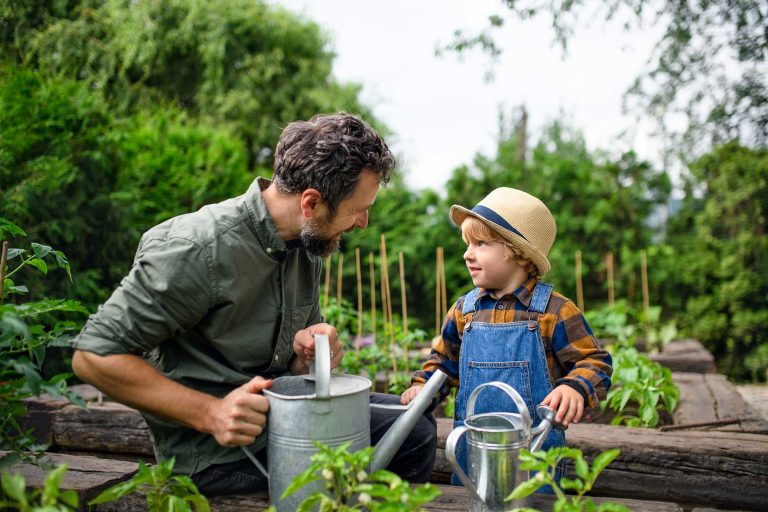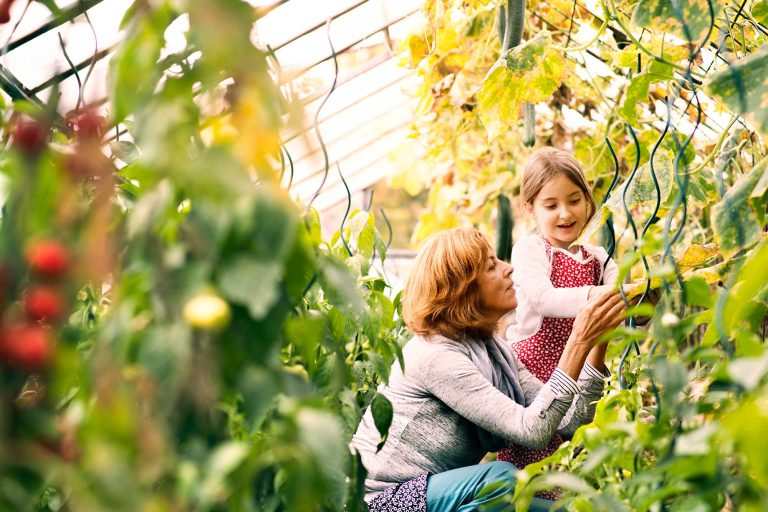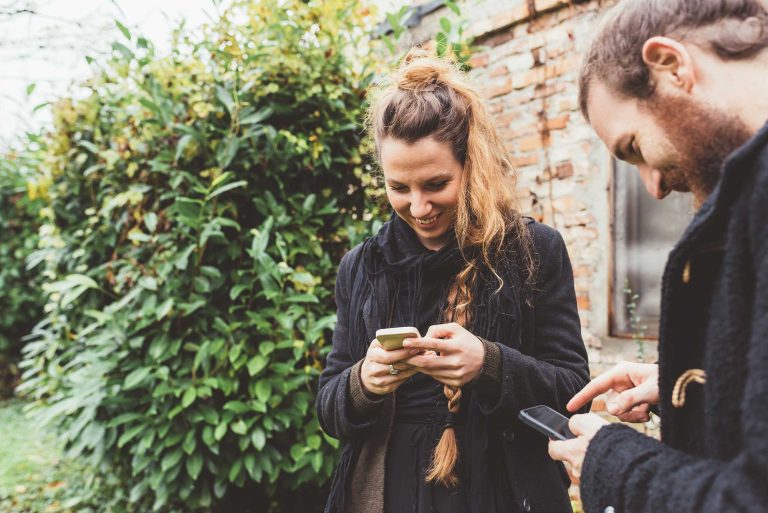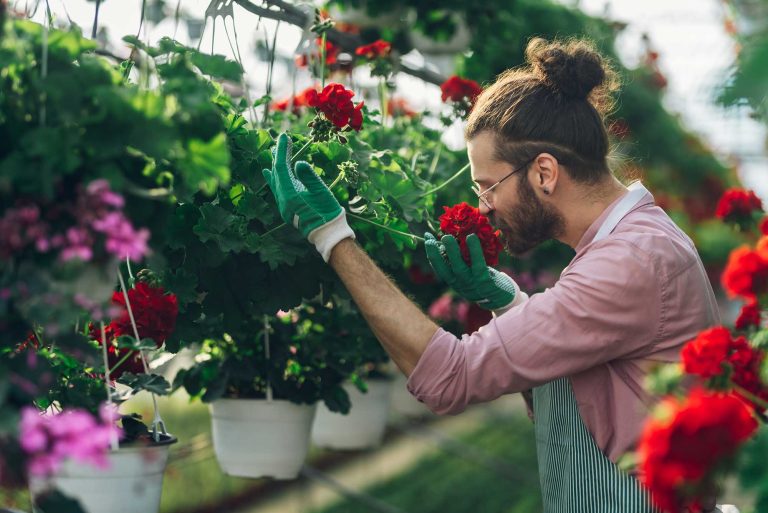Imagine stepping into your garden and feeling an instant wave of calm and delight. The secret to creating this oasis lies in how you arrange your plant pots.
You might be wondering, “How can I transform my garden into a space that captivates and soothes? ” The answer is simpler than you think. By learning how to arrange plant pots effectively, you can turn any outdoor space into a vibrant masterpiece.
You’ll discover easy tips and tricks that can breathe life into your garden. Imagine the colors, the textures, and the harmony you can achieve with just a few adjustments. You’ll learn how to make your garden not just a place to grow plants, but a destination that draws you in and keeps you there. Dive in to find out how you can make your garden a reflection of your personal style and a source of endless enjoyment.
Choosing The Right Plants
Arranging plant pots in the garden enhances beauty and helps plants thrive. Group pots by size and color for a cohesive look. Ensure taller plants don’t overshadow smaller ones, allowing sunlight to reach all.
Choosing the right plants for your garden sets the foundation for success. Each plant brings its unique charm and needs. Understanding these needs helps in crafting a beautiful and thriving garden. Consider a few key factors to select the best plants for your garden.Considering Climate And Soil
Every plant thrives in specific climates. Research which plants suit your local weather. Some plants love the sun, while others prefer shade. Check your garden’s sunlight exposure. Soil type also affects plant growth. Test your soil’s pH level and texture. Some plants need acidic soil, others require alkaline. Adjusting soil can improve plant health.Selecting Complementary Colors
Color harmony in your garden pleases the eye. Choose plants with colors that blend well. Think of warm colors like reds and yellows. Cool colors include blues and purples. Mixing colors can highlight specific areas. Use a color wheel to find complementing shades. Balance bright and muted tones for visual interest. This creates a cohesive look in your garden.
Credit: www.theolympian.com
Understanding Pot Sizes
Arranging plant pots in the garden involves understanding pot sizes. Larger pots can house bigger plants, creating focal points. Smaller pots are perfect for delicate flowers, adding variety and balance. Mixing pot sizes enhances garden aesthetics, showcasing different plants beautifully.
Understanding pot sizes is key to arranging plant pots in the garden. Different pot sizes serve various functions and aesthetics. Smaller pots offer flexibility and can fit into tight spaces. Large pots can be bold focal points in your garden. Choosing the right size enhances both plant growth and garden design.Small Pots For Versatility
Small pots are perfect for herbs and small flowers. They allow easy rearrangement and creativity. You can place them on steps, tables, or shelves. They brighten up dull corners and add charm. Group them together for visual interest. Their compact size makes them ideal for balconies or patios.Large Pots For Statement Pieces
Large pots draw attention and create impact. They are perfect for big plants or trees. Use them to anchor a garden space or entrance. Their size supports deeper roots and healthy growth. Place them strategically to balance garden elements. They can also stand alone as striking features.Creating Visual Balance
Creating Visual Balance Position taller plant pots at the back to create depth. Use smaller pots in front for contrast. Experiment with different shapes and colors for a harmonious look.
Creating visual balance in your garden is like painting a picture with nature. The way you arrange your plant pots can dramatically change the aesthetic appeal of your outdoor space. It’s all about finding harmony between different shapes, sizes, and colors. Have you ever noticed how a well-balanced arrangement can transform a chaotic garden into a serene oasis? Let’s explore how you can achieve this through different types of arrangements.Symmetrical Arrangements
Symmetrical arrangements are all about mirroring. Imagine a straight line running through your garden, and each side is a perfect reflection of the other. This style is ideal if you love order and neatness. Start by selecting pots of similar shapes and sizes. Arrange them evenly on either side of a pathway or garden feature. This creates a sense of calm and control in your space. Think of a formal garden, where each element has its place. Symmetry can make your garden look grand and organized. It’s perfect for those who appreciate a traditional aesthetic.Asymmetrical Arrangements
Asymmetrical arrangements offer freedom and creativity. Unlike symmetry, this style doesn’t rely on reflection but rather on balance through variety. Mix different pot sizes, shapes, and colors to create a dynamic look. Place larger pots at the back and smaller ones in front to add depth. This approach allows for more flexibility and personal expression. Consider the natural flow of your garden. Asymmetrical arrangements can mimic the way plants grow in the wild, adding a touch of nature’s unpredictability to your space. If you love a more relaxed and natural vibe, this is the style for you. Which arrangement speaks to you? Whether you prefer the order of symmetry or the freedom of asymmetry, both can create stunning visual balance in your garden. Experiment and find the perfect arrangement that reflects your personality and enhances your outdoor sanctuary.
Credit: www.youtube.com
Utilizing Vertical Space
Utilizing vertical space in your garden maximizes plant display and saves ground area. Arrange plant pots on tiered stands or wall-mounted shelves to create a lush, layered effect. This approach enhances aesthetics and provides easy access for maintenance and watering.
Utilizing vertical space in your garden can transform a flat, monotonous space into a dynamic and vibrant one. By thinking vertically, you maximize your garden’s potential, making room for more plants without expanding the ground area. This approach not only enhances the aesthetics but also creates layers of interest that can captivate anyone who steps into your garden.Hanging Pots
Hanging pots are a fantastic way to add dimension to your garden. They allow you to bring plants to eye level, creating an immersive green experience. Choose lightweight pots and sturdy hooks to ensure safety and longevity. Consider placing hanging pots on a porch or pergola for a cascading effect. Opt for trailing plants like ivy or petunias to add a lush, flowing look. Adjust the height and spacing to create a balanced display. Remember to water these pots more frequently, as they tend to dry out faster due to wind exposure. This small effort can keep your vertical garden thriving.Stacked Arrangements
Stacked arrangements are perfect for creating a tiered effect using plant pots. This method is especially useful for small spaces where floor area is limited. By stacking pots, you create a beautiful tower of greenery that draws the eye upwards. Use pots of varying sizes to create a stable base and an interesting visual. Larger pots at the bottom provide support, while smaller pots on top add height. Secure the pots with garden-safe adhesive if necessary. Experiment with different plant combinations to achieve a colorful and textured display. Consider mixing herbs with flowers for both beauty and utility. Are you ready to transform your garden with these vertical strategies?Incorporating Different Heights
Arranging plant pots at various heights adds depth and interest to your garden. Use stands or stacked pots for visual appeal. Mixing tall and short plants creates layers that enhance the garden’s beauty.
Arranging plant pots with varying heights can transform your garden into a dynamic and visually appealing space. By playing with elevation, you create layers and depth, making even a small garden appear larger and more intriguing. Consider how you can use height to highlight your favorite plants or draw attention to certain areas.Elevated Pots
Elevating pots instantly adds interest to your garden design. Use stands, tables, or wall-mounted brackets to raise pots off the ground. This not only showcases the plant but also helps prevent soil compaction. Think about using mismatched pots for a quirky vibe. A stack of bricks or an old chair can serve as a pedestal for your beloved fern. Have you ever thought about using a ladder as a plant stand? It’s a creative way to display your plants at varying heights. Elevated pots can also be practical. By raising pots, you reduce the risk of pests like slugs attacking your plants. Plus, it keeps them out of reach from curious pets.Low-ground Designs
Low-ground pots are perfect for creating a lush, carpet-like effect. Consider using wide, shallow containers to plant ground-covering plants like creeping thyme or succulents. These designs work well in creating a serene pathway through your garden. Imagine walking through your garden and being greeted by a blanket of greenery at your feet. It’s an immersive experience. Use low-ground designs to soften hard edges. Place them around the base of larger pots or trees to create a cascading effect. It’s a simple technique that can make your garden feel more cohesive and connected. By experimenting with elevated and low-ground designs, you can create a garden that is not only aesthetically pleasing but also uniquely yours. What combination will you try next?Grouping For Impact
Arranging plant pots in your garden with thoughtful grouping can transform a simple space into a captivating oasis. Grouping for impact is all about creating visual interest and harmony. You can make your garden more appealing by strategically grouping pots based on various elements like color and texture. Let’s explore how these groupings can enhance the beauty of your garden.
Color Grouping
Color grouping is a powerful way to create a cohesive look in your garden. Imagine walking into a garden where vibrant reds, soothing blues, and refreshing greens are thoughtfully arranged. The key is to select pots and plants that complement each other. Pairing pots in similar shades can create a unified theme, while contrasting colors can add a pop of excitement. Take a moment to visualize the calming effect of cool blues grouped together, or the vibrant energy of reds and oranges. Experiment with different combinations and see what speaks to you.
Texture Grouping
Texture adds another layer of interest to your garden arrangement. Mixing different textures can create a dynamic and engaging space. Consider combining rough, rustic pots with sleek, modern ones. This juxtaposition can draw attention and invite curiosity. Imagine the tactile experience of running your fingers over a textured pot next to a smooth one. Reflect on how varying the textures of the pots and plants can add depth and intrigue to your garden setup. How do these textures change the feel of your garden?
Seasonal Adjustments
Seasonal changes affect how plant pots should be arranged in the garden. Each season brings its own challenges and opportunities for your plants. Adjusting your garden setup ensures plants thrive year-round.
Rotating Plants
Rotating plants helps them receive even sunlight. Turn plant pots every few weeks to prevent uneven growth. This simple trick keeps plants healthy and strong. It also balances their exposure to sunlight.
Different plants have different light needs. Some may require more frequent rotation. Observe each plant’s growth and adjust rotation schedules accordingly.
Adjusting For Weather
Weather conditions often change with the seasons. Protect your plants by adjusting their placement. During hot summer days, move pots to a shaded area. This prevents leaf burn and soil from drying out.
In colder months, bring sensitive plants indoors or closer to the house. This provides warmth and shields them from harsh winds. Using plant covers can also help protect delicate species during cold snaps.

Credit: www.latimes.com
Maintaining Aesthetic Appeal
Arrange plant pots by size and color to create visual harmony. Use varied heights for depth and interest. Position larger pots at the back, smaller ones in front, to maintain a balanced look.
Maintaining the aesthetic appeal of your garden involves more than just placing pots. It’s about creating a visual harmony that delights the senses. A well-arranged garden can uplift moods and inspire creativity. Keeping your plant pots visually appealing requires regular attention. This ensures that your garden remains a serene and inviting space.Regular Cleaning
Dust and dirt can gather on plant pots over time. This buildup can dull their appearance. Regular cleaning keeps them looking fresh and vibrant. Use a soft cloth to wipe away grime. For stubborn stains, a gentle soapy solution works wonders. Make sure to rinse thoroughly to avoid soap residue. Clean pots reflect light better, enhancing their visual appeal.Rearranging For Freshness
Rearranging pots occasionally breathes new life into your garden. It gives a new perspective and breaks monotony. Seasonal changes are a great time to shuffle things around. This allows you to highlight blooming plants. Consider the height and color of plants when rearranging. Taller plants can create a focal point. Bright colors can add a splash of energy. Regular rearrangement keeps the garden dynamic and exciting.Frequently Asked Questions
How To Choose The Right Plant Pots?
Selecting the right plant pots involves considering size, material, and drainage. Choose pots that fit your plants’ root systems. Opt for materials like terracotta for good air circulation. Ensure pots have drainage holes to prevent waterlogging and root rot.
What Is The Best Layout For Garden Pots?
For an effective layout, group pots by height, color, and plant type. This creates visual harmony and balance. Arrange taller pots at the back and smaller ones at the front. Consider the sun exposure needs of each plant for optimal growth.
How To Mix Plant Types In Pots?
Mixing plant types in pots enhances variety and aesthetics. Combine plants with similar care needs, like water and light requirements. Use contrasting colors and textures for visual appeal. Ensure plants have enough space to grow without crowding.
How Do Pots Affect Plant Growth?
Pots play a crucial role in plant growth. Adequate size prevents root-bound conditions, promoting healthy growth. Material affects temperature and moisture retention. Good drainage prevents root rot. Choose pots that support your plants’ specific growth needs.
Conclusion
Arranging plant pots adds charm to any garden. Consider colors and sizes. Mix tall and short pots for balance. Group similar plants for harmony. Use empty spaces creatively. Experiment with shapes and patterns. Move pots for new looks. Find spots with good sunlight.
Watch for shade needs. Keep paths clear for easy access. Regularly check plant health. Water and fertilize as needed. Enjoy the beauty you create. Every garden tells a story. Your arrangement speaks uniquely. Relax and let nature inspire you. The garden becomes a peaceful retreat.
Embrace creativity and love for plants.








